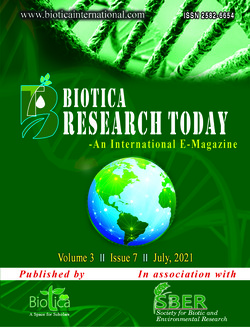
DNA Authentication of Fish Products: A Tool to Reveal the Risk of Mislabeling/ Fraudulence Associated with Seafood Trade
R. Rajeshkannan*
ICAR- Central Institute of Fisheries Education, Panch Marg, Off Yari Road, Andheri (West), Mumbai, Maharashtra (400 061), India
V. Alamelu
Dr. MGR. Fisheries College and Research Institute, Tamil Nadu Dr. J. Jayalalithaa Fisheries University, Thalainayeru, Nagapattinam, Tamil Nadu (614 712), India
V. Vijayarahavan
Dr. MGR. Fisheries College and Research Institute, Tamil Nadu Dr. J. Jayalalithaa Fisheries University, Thalainayeru, Nagapattinam, Tamil Nadu (614 712), India
S. Vimaladevi
Dr. MGR. Fisheries College and Research Institute, Tamil Nadu Dr. J. Jayalalithaa Fisheries University, Thalainayeru, Nagapattinam, Tamil Nadu (614 712), India
DOI: NIL
Keywords: DNA Authentication, DNA Barcoding, Mislabeled fishes, Seafood fraudulence
Abstract
Mislabeling poses a threat to the sustainability of seafood supply chains, food integrity, the economy, public health, and consumers’ ethics and, can significantly affect conservation efforts. It is essential that these fraudulent and mislabeled fishes are to be revealed by PCR-based techniques. DNA Authentication is one of the effective tools and the mitochondrial Cytochrome c Oxidase subunit I gene is used to identify the mislabeling of commercially important fishes at a DNA level. Because this analysis provides strong support to detect fishes that are sold under the wrong name and fraudulent seafood products sold as deliberately substituted by low-value fishes instead of high-value fishes. It helps to prohibit the conserved fish species from the sold. This article highlighted the suitable method used to overcome mislabeling and fraudulence issues that occur in the seafood trade to create awareness to poor consumers and seafood traders.
Downloads
not found
Reference
Hajibabaei, M., Singer, G. A. C., Hickey, D. A., 2006. Benchmarking DNA barcodes: an assessment using available primate sequences. Genome. 49, 851 -854.
Kumar, R., Singh, P. J., Nagapune, N. S., Kushwaha, B., Srivastava, S. K., Lakra, W.S., 2007. A non-invasive technique for rapid extraction of DNA from fish scales. Ind.J. Exp.Biol. 45, 992-997.
Rajeshkannan, R., J. Jaculine Pereira, K. Karal Marx, P. Jawahar, D. Kiruthiga Lakshmi and Devivaraprasad Reddy., 2019. DNA Barcoding on Cardinalfishes (Apogonidae) of Thoothukudi Coast. Int.J.Curr.Microbiol.App.Sci. 8(08): 1293-1306.
